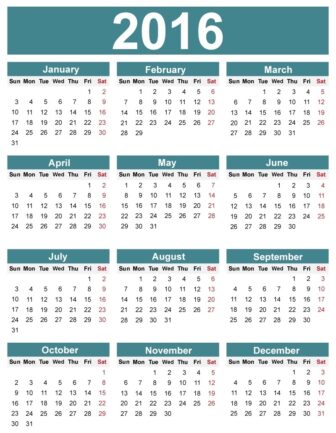According to a recent Barna Group poll, about 1 in 5 Americans claims to have read the Bible through from start to finish. Many who have done so follow a Bible-reading schedule that will take them through the Bible in a year. Personally, I have kept a 1-year Bible reading practice for many years now, generally choosing a different translation each time.
Most of the one-year Bible reading plans suggest a daily reading of a passage from the Old Testament and a passage from the New Testament, and many will also add a selection from the Psalms and/or Proverbs as well. I suppose the intention is to give the reader a balanced mixture of Scripture passages throughout the year. Bible publishers have seized the opportunity and created many “One-Year” Bibles that typically follow this pattern – a few Old Testament chapters, part of a Psalm, a couple of Proverbs and a chapter or two from the New Testament arranged for each day of the year. At the end of 365 days, the reader has read the entire Bible from start to finish.
The Problem With Typical One-Year Reading Plans
The Bible is a collection of writings not put together in chronological order, even if you were to just start in Genesis and read through to Revelation. Because of this, when you get to some of the Old Testament prophets, you may not have a context for why the prophet is saying something. Reading the Psalms, it can be difficult to know why a particular one was written. Even in the New Testament, after reading four separate accounts of the life of Yeshua (Jesus) and then the Acts of the Apostles, you are presented with a series of letters from Paul and others without any context for knowing when or why they were written during the course of Paul’s journeys or first century history.
Add to this the practice of dividing Scripture up into a few Old Testament chapters, some Psalms and Proverbs, and some New Testament chapters grouped together each day, and the context is confused if not lost completely. The motive and idea is good, but the presentation needs to be improved.
A Better One-Year Bible Reading Plan
Reading through the Bible in chronological order is amazing. If you are new to a Hebraic understanding of faith, or even if you are not, knowing the setting and context of passages opens up a whole new understanding. Reading a Psalm at the point in the historical narrative that it was written can add a new appreciation for the words of distress, prayer or praise. Reading a prophecy from Jeremiah or one of the other prophets within the setting that it was given brings the warnings and calls for repentance to life and even allows you to see how some of them were fulfilled. Pausing during the story of Paul’s travels to read the letter that he wrote to the church he just visited or was about to visit helps you to understand why he wrote what he did.
You can follow a printed plan that takes you through your Bible in chronological order over a one year time span. However, you will be constantly going back to the plan during your reading time and flipping back and forth through your Bible. If you really want to read the story of the Bible in the order it happened, I recommend getting a One-Year Chronological Bible. There are several available, and they follow the same idea as other one-year Bibles in giving you a selection of passages for each day. The difference with these is that you read the entire Bible in the order that events occurred. The publisher has already rearranged the text so that you do not have to go back to a schedule that sends you to different passages. You just read.
Here is a word of advice – it may be difficult for you to find a particular passage, simply because these Scriptures are not organized in the normal way. Always have a pen and paper handy so you can write down something you want to look up later in your regular Bible.
I have done this for a few years using different translations. The goal is to read the complete story from beginning to end, not to engage in a deep study (which you could not possibly do in a one-year time frame!). Read the daily selection, and make notes of something that you may want to go back and study later. For this chronological reading, I have found it helpful to choose an easy-reading translation such as the New International Version or New Living Translation, neither of which are literal translations that I would use for study. But for purposes of simply reading, they are great. If, however, you prefer to read a more literal translation or one with which you are familiar, then do so. Again, the goal is to read through the entire Bible in the order in which the events happened.
Recommended One-Year Chronological Bibles
Shown below are several One-Year Chronological Bibles, and if you click on one of the pictures it will take you to the product on Amazon. And if you order one right now, you can still get it in time to begin reading at the start of 2016 (if you live in the United States, anyway – not sure about other parts of the world). The first row shows Bibles with daily portions in various translations. I am also showing you a few chronological Bibles that are not divided into daily readings. For 2015 I have been reading the Chronological Study Bible, New King James Version, which is not laid out in a one-year daily format. I am now finishing up the year simply by sticking to reading four pages per day.
I encourage everyone to read through the Bible in chronological order in 2016. You will be blessed and gain new understanding as you do.








